Industry News
Heirloom Unveils America’s First Commercial Direct Air Capture Facility Heirloom Carbon Technologies unveiled a new facility that can capture up to 1,000 tons of CO2 per year, which will be stored in concrete to fulfill commercial removal purchases.
Heirloom Unveils America’s First Commercial Direct Air Capture Facility
Heirloom Carbon Technologies unveiled a new facility that can capture up to 1,000 tons of CO2 per year, which will be stored in concrete to fulfill commercial removal purchases.
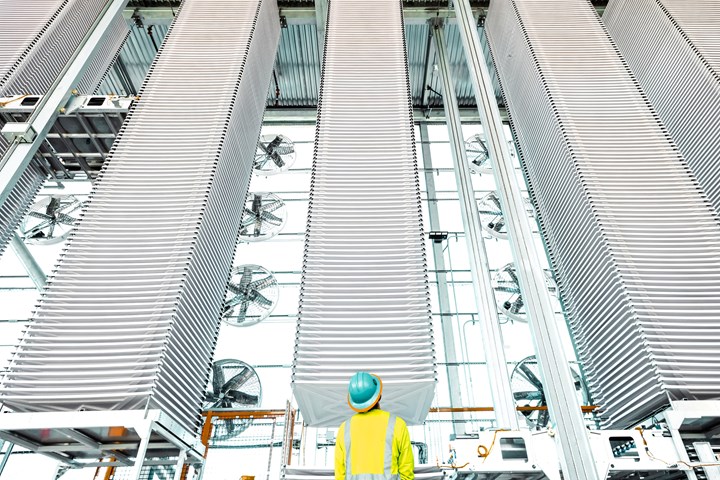
Photo Credit: Heirloom Technology
“This first commercial direct-air capture facility is the closest thing on Earth that we have to a time machine, because it can turn back the clock on climate change by removing carbon dioxide that has already been emitted into our atmosphere,” said Heirloom’s CEO and co-founder, Shashank Samala. “The capacity of Heirloom’s limestone-based technology to capture CO2 from the air has gone from 1 kilogram of CO2 to up to one million, or 1000 metric tons, in just over two years. We owe it to every climate-vulnerable citizen to continue to deploy our technology at the urgent pace required to reach billion-ton scale and beyond in time to stop the worst of climate change.”
This first-of-its-kind domestic DAC facility helps to advance President Biden’s 2050 net-zero goal and California Governor Gavin Newsom’s 2045 state net-zero targets.
The Heirloom technology works by using limestone, an abundant, easy-to-source and inexpensive material, to pull CO2 from the air. Using a renewable-energy-powered kiln, the limestone is heated to extract the CO2, leaving a mineral powder that absorbs more CO2. This powder is then spread onto vertically stacked trays where it acts like a sponge – pulling CO2 from the air. Once saturated, the material is returned to the kiln, the CO2 is extracted, and the process begins again. The captured CO2 gas is then permanently stored safely underground or embedded in concrete.
Heirloom’s technology represents a low-cost pathway to permanent CO2 removal. The company’s goal is to remove 1 billion tons of CO2 from the atmosphere by 2035 – a figure which represents 20% of today’s annual U.S. emissions and 10% of global carbon removal needed annually by 2050.
Financing for Largest Clean Energy Project in U.S. Closes
Pattern Energy Group LP (Pattern Energy), a leader in renewable energy and transmission infrastructure, has closed an $11 billion non-recourse financing and begun full construction of SunZia Transmission and SunZia Wind, which together is the largest clean energy infrastructure project in U.S. history.
SunZia Transmission is a 550-mile, 525 kV high-voltage direct current (HVDC) transmission line between central New Mexico and south-central Arizona with the capacity to transport 3,000 MW of clean, reliable, and affordable electricity across Western states. SunZia Transmission will deliver clean power generated by Pattern Energy’s 3,515 MW SunZia Wind facility, the largest wind project in the Western Hemisphere, which is being constructed across Torrance, Lincoln, and San Miguel Counties in New Mexico.
SunZia Wind and Transmission will employ more than 2,000 workers on-site during construction, including heavy equipment operators, electricians, laborers and others.
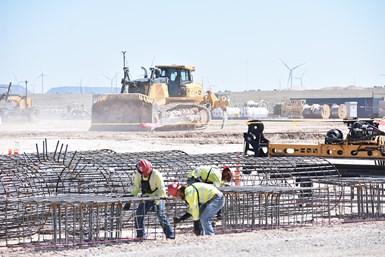
Construction is underway on the SunZia Transmission and Wind project in New Mexico.
Photo Credit: Pattern Energy
Utah Associated Municipal Power Systems and NuScale Terminate Project
Utah Associated Municipal Power Systems (UAMPS) and NuScale Power Corporation announced that they have mutually agreed to terminate the Carbon Free Power Project (CFPP).

“Through our work with UAMPS and our partnership with the U.S. Department of Energy, we have advanced our NuScale Power Modules to the point that utilities, governments and industrials can rely on a proven small modular reactor (SMR) technology that has regulatory approval and is in active production. Our work has advanced NuScale technology to commercial deployment which we will continue to build on with future customers,” said NuScale President and Chief Executive Officer John Hopkins.
“NuScale will continue with our other domestic and international customers to bring our American SMR technology to market and grow the U.S. nuclear manufacturing base, creating jobs across the U.S. We have learned lessons during the development of the CFPP that we will carry forward in future development work to meet the future energy needs of the UAMPS member communities.
Dow to Invest in World's First Net-Zero Integrated Ethylene Cracker in Alberta
Dow announced a final investment decision to build the world’s first net zero Scope 1 and 2 emissions-integrated ethylene cracker and derivatives facility in Alberta, Canada.
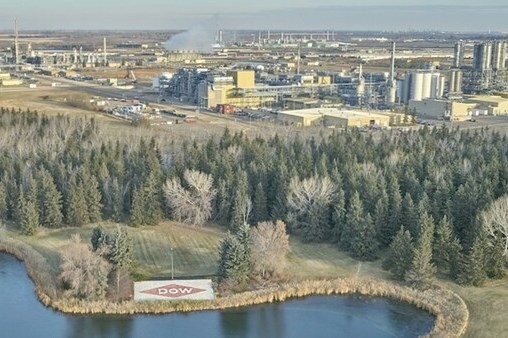
The $6.5 billion project includes building a new ethylene cracker and increasing polyethylene capacity by 2 million MTA (metric tons per annum) as well as retrofitting the site’s existing cracker to net-zero Scope 1 and 2 emissions. The investment is expected to deliver $1 billion of EBITDA growth per year at full run rates over the economic cycle while decarbonizing 20% of Dow’s global ethylene capacity.
The project builds on Dow’s expertise in successfully implementing large projects, such as its TX-9 cracker in Freeport, Texas, which has delivered more than 15% return on invested capital since its 2017 start-up through best-in-class capital intensity, conversion cost and low emissions intensity.
Construction should begin in 2024, with capacity additions expected in phases, with the first in 2027, adding approximately 1,285 KTA (kilo tons per annum) of ethylene and polyethylene capacity, and the second phase starting up in 2029, adding approximately 600 KTA of capacity.
Siemens Energy Named Preferred Supplier for Advanced Fission Power Plant Deployments for Oklo

Oklo industrial steam turbine package.
Photo Credit: Oklo
Oklo Inc., a fast fission, clean-power technology and nuclear-fuel recycling company, has signed a memorandum of understanding with Siemens Energy. designating them to potentially become Oklo’s preferred supplier for rotating equipment of the power conversion system (conventional island) for the Aurora powerhouse. Siemens Energy could also provide consulting to support Oklo in design work of the conventional island.
“Fast fission reactors are a proven technology to produce heat and partnering with Siemens Energy takes steps to secure an efficient, reliable and scalable supply chain for converting that heat into power in our Oklo Aurora powerhouses,” said Alex Renner, senior director of product at Oklo.
“The clean power generated by advanced nuclear is one of the key steps to reaching a net zero future and Siemens Energy’s thermal energy components and services complement the powerhouses being developed by Oklo,” said Tobias Panse, senior vice president of industrial steam turbines and generators with Siemens Energy.
Siemens will also provide consulting to support the design and integration of the power conversion system (conventional island). Most importantly, this partnership accelerates the commercialization of Oklo's advanced fission energy solutions.
EPA Issues Final Rule on Methane Reduction
The U.S. Environmental Protection Agency (EPA) announced on December 2, 2023, a final rule that will sharply reduce methane and other harmful air pollutants from the oil and natural gas industry. The final action was announced at COP28 in Dubai, United Arab Emirates (UAE), advancing President Biden’s historic climate agenda and day-one commitment to restore the United States’ global leadership on climate change.
EPA’s final rule should prevent an estimated 58 million tons of methane emissions from 2024 to 2038, the equivalent of 1.5 billion metric tons of carbon dioxide – nearly as much as all the carbon dioxide emitted by the power sector in 2021. In 2030 alone, the expected reductions are equivalent to 130 million metric tons of carbon dioxide – more than the annual emissions from 28 million gasoline cars.
Details are on the EPA website, and see the article on page 20 for alternatives to gas-powered actuators.
Canada Launches $1.5 Billion Critical Minerals Infrastructure Fund
Critical minerals are key enablers of clean technologies, like batteries, and clean energy sources, such as wind turbines and solar panels, which are essential to fighting climate change. Canada announced the launch of a Call for Proposals (CFP) of the Critical Minerals Infrastructure Fund (CMIF) to address key infrastructure gaps to enable sustainable critical minerals production and to connect resources to markets. With up to $1.5 billion ($1.09 billion USD) available over seven years, the fund will support clean energy and electrification initiatives as well as transportation and infrastructure projects.
This CFP will be the first of several under CMIF. Applicants can seek access to up to $50 million per project for nongovernmental applicants and up to $100 million per project for provincial and territorial governments investing in public projects. Information on funding opportunities and the applicant guide are now available online.
First Power from Massachusetts Offshore Wind Project

Avangrid, Inc., a leading sustainable energy company and member of the Iberdrola Group, and Copenhagen Infrastructure Partners (CIP) announced that power from the Vineyard Wind project was delivered to the New England grid for the first time. As part of the initial commissioning process, at 11:52 PM on Tuesday, January 2, 2024, one turbine delivered approximately five megawatts of power, with additional testing expected to happen both on and offshore in the coming weeks. The project expects to have five turbines operating at full capacity early in 2024.
Power from the project interconnects to the New England grid in Barnstable, transmitted by underground cables that connect to a substation further inland on Cape Cod. Once completed, the project will consist of 62 wind turbines generating 806 Megawatts, enough to power more than 400,000 homes and businesses in Massachusetts.
IMI Critical to Collaborate with FAC in South America
IMI Critical Engineering has announced a new agent collaboration with FAC Engenharia to offer high quality and efficient flow control solutions for oil and gas customers and their partners in Brazil, as it works to strengthen its position in South America.
The collaboration means FAC Engenharia will sell products and services from IMI Critical Engineering brands, including IMI CCI, IMI Fluid Kinetics, IMI Orton, IMI STI, providing extensive on-site support.
Harrington Acquires PumpMan
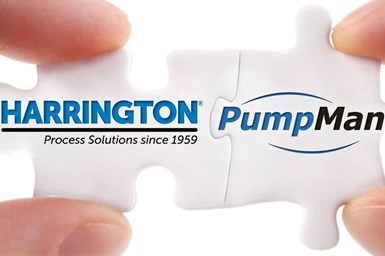
Harrington Process Solutions, a distributor of industrial products for corrosive and high-purity applications in the U.S., announced the acquisition of PumpMan, a provider of onsite maintenance, repair and replacement for all components in water and wastewater pumping systems.
Founded in 2016, PumpMan has grown quickly through a combination of organic growth and acquisitions, expanding to 11 locations across the United States.
People News
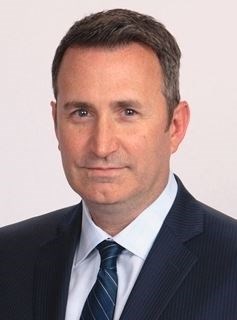
Joseph P. Ford was appointed engineering manager at Conval, a global manufacturer of severe service valves. Ford is a seasoned engineering leader with more than 30 years experience in all aspects of product lifecycle including R&D, project management, product design, configuration control and lean manufacturing. He has previously served in similar roles at Linde Advanced Materials Technologies, Circor and Baker Hughes, and holds a B.S. in mechanical engineering from Villanova University.
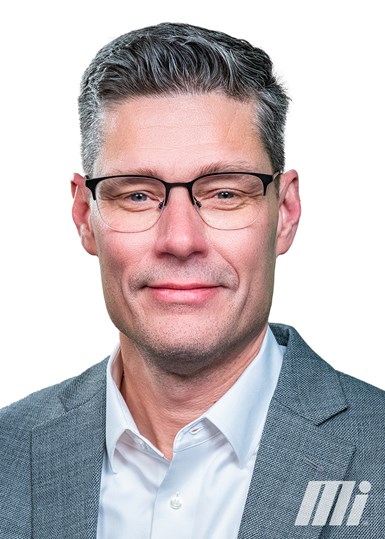
Motion Industries, Inc., a distributor of maintenance, repair and operation replacement parts, and a provider of industrial technology solutions, named Chris Cleland to senior vice president of Strategy & Markets, effective immediately. He will lead Motion’s strategy development for its business groups, plus the e-commerce and digital teams.







 Unloading large gate valve.jpg;maxWidth=214)

